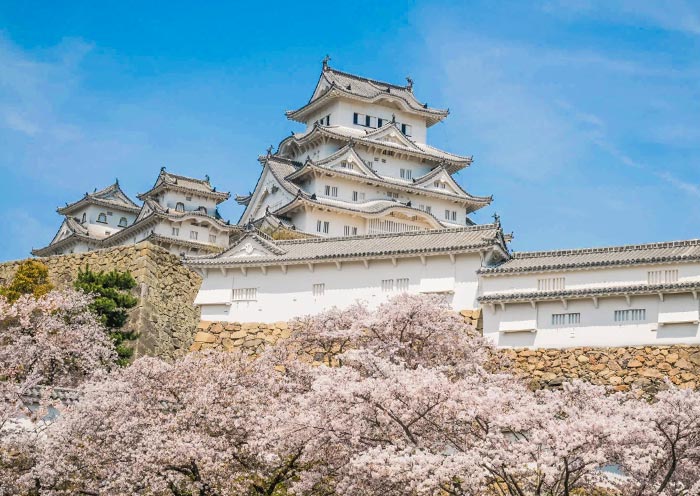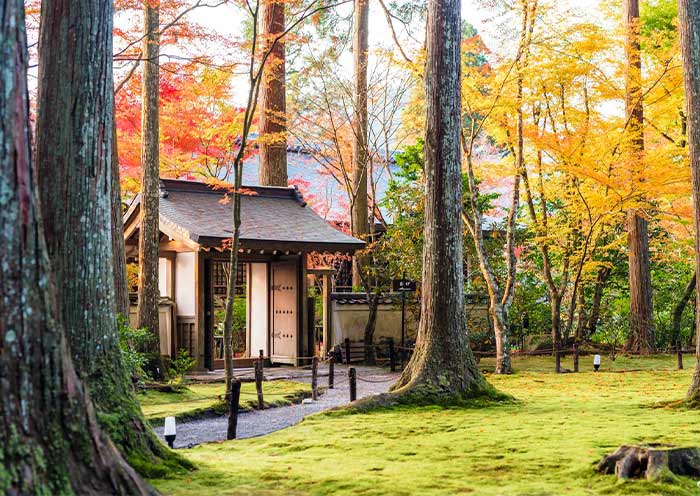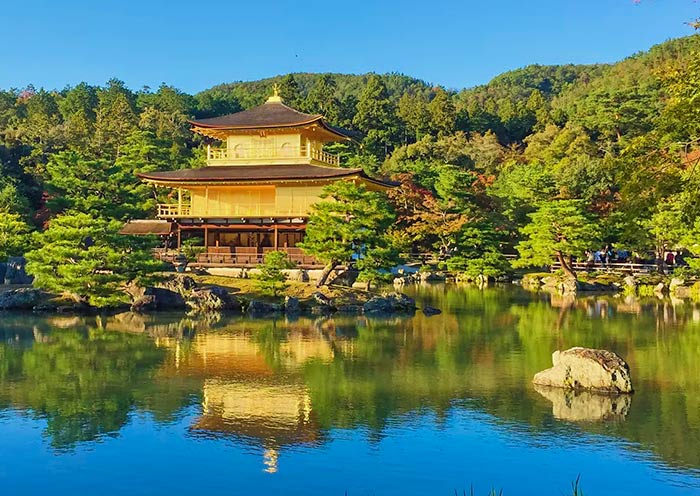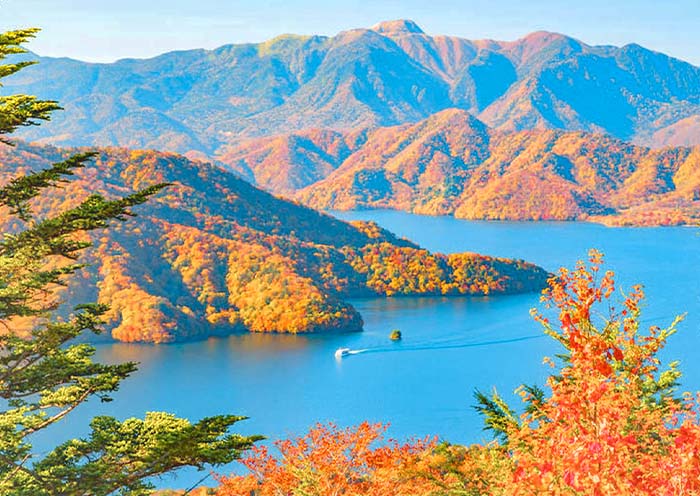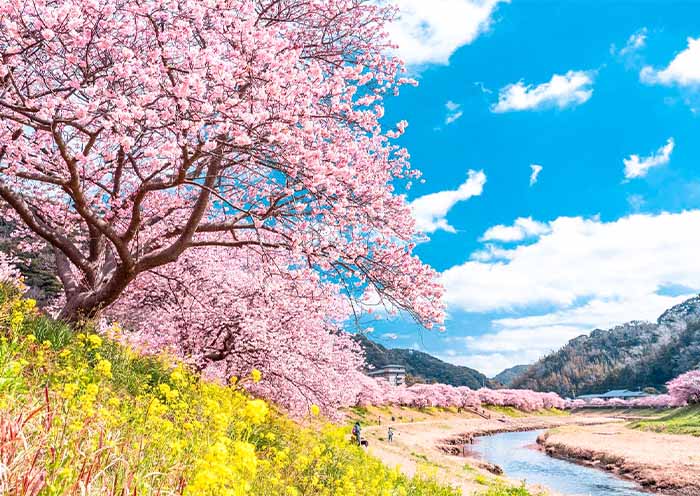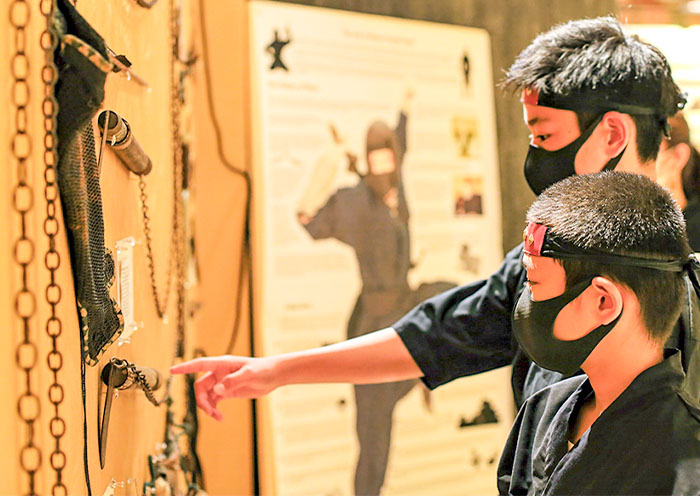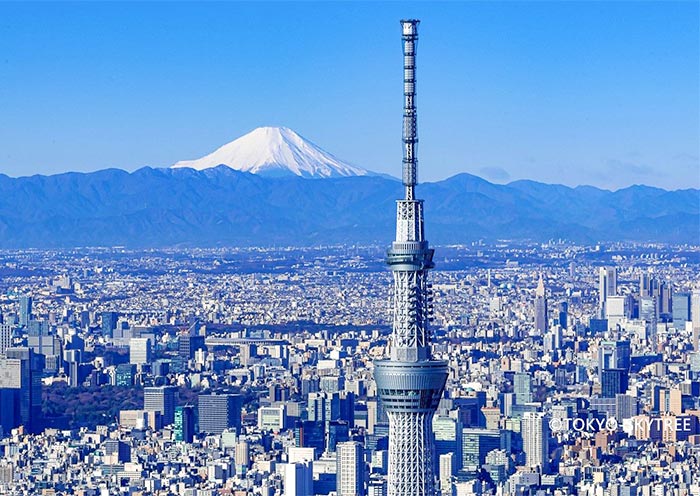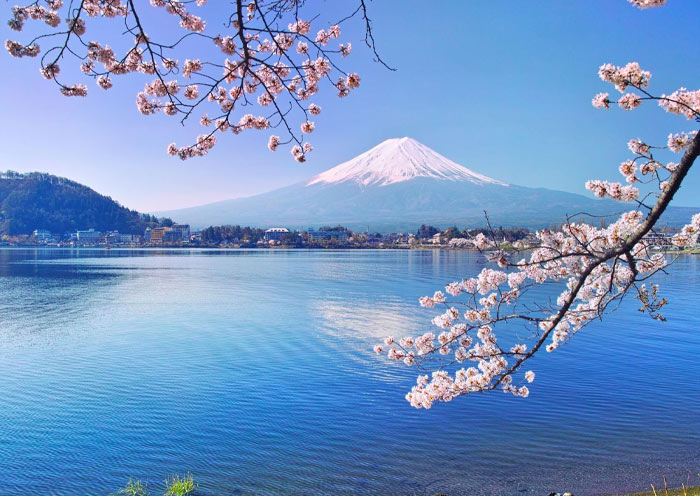10 Days Japan Garden Tour: 8 Iconic Japanese Gardens from Tokyo to Osaka
From
USD request![]()
- This is the price per person, based on a group of 6 people, 4-star hotel accommodation, and travel during the regular season.
- Early-bird rates apply to bookings made at least 6 months prior to the departure date.
- The price is subject to change depending on your travel season, group size, hotel class, and potential fluctuations in currency exchange rates.
- Highlights
- Itinerary
- Price
- Trip Notes
- Accommodation
- Photos
- Reviews
10 Days Through Japan’s Finest Gardens and Cultural Heritages
If you are an admirer of Japanese garden art, this 10-Day Japan Garden Tour is crafted for you. We will take you through the heart of Japan, from vibrant Tokyo and the samurai heritage of Kanazawa, to the ancient cities of Kyoto and Nara, the timeless Himeji, and finally to the historic city of Osaka, exploring 8 of the most representative Japanese gardens.
You will explore various types of garden art. In Tokyo, discover the fusion of Western and Japanese styles at Shinjuku Gyoen and the unique tidal pond of Hamarikyu Gardens, which changes with the ebb and flow of the tide. In Kanazawa, stroll through Kenroku-en, one of Japan's three most beautiful gardens, and appreciate its "strolling-style" design that combines spaciousness and seclusion.
In Kyoto, contemplate the minimalist dry landscape garden of Ryoan-ji and admire the reflection of the golden pavilion on the pond at Kinkaku-ji. Additionally, you will find adorable Jizo statues scattered among the moss garden at Sanzen-in. In Himeji, pair the grandeur of the White Heron Castle with the refined landscapes of Koko-en Garden’s nine Edo-style designs.
Between gardens, this journey also connects you to Japan’s cultural soul - UNESCO temples, iconic shrines, Mount Fuji vistas, traditional streets, geisha districts, samurai quarters, and flavorful market scenes - making it more than a garden tour, but a complete immersion into the beauty and heritage of Japan.
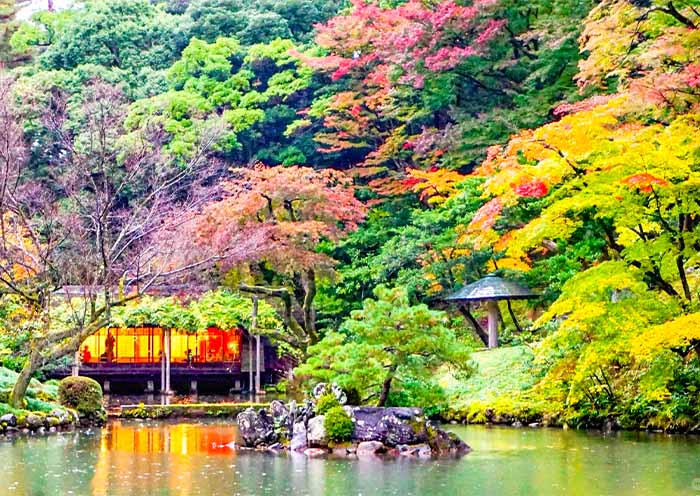
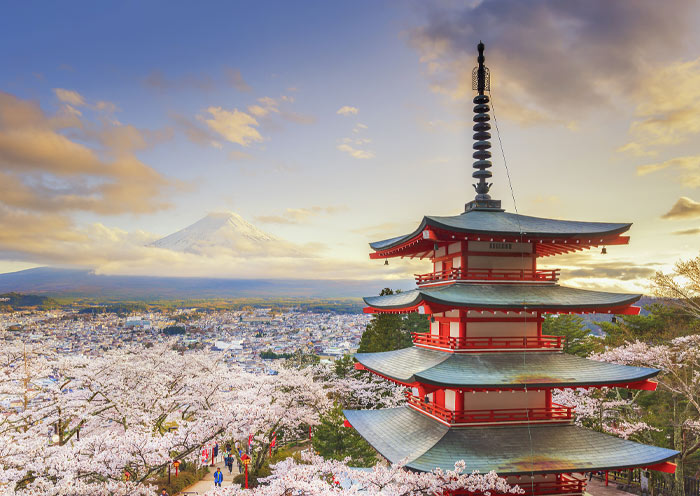
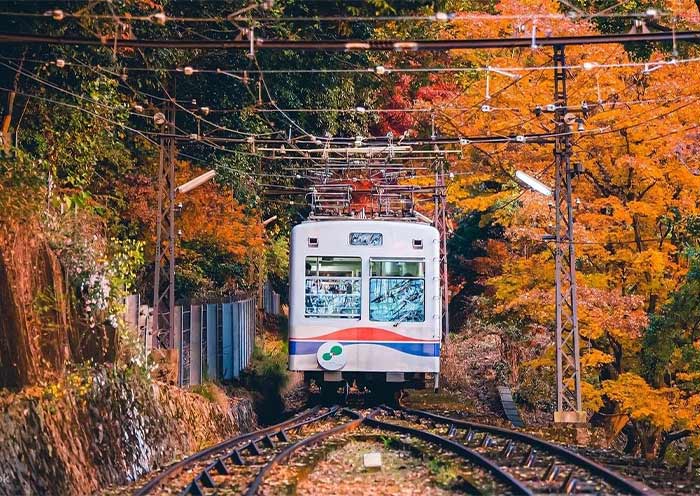
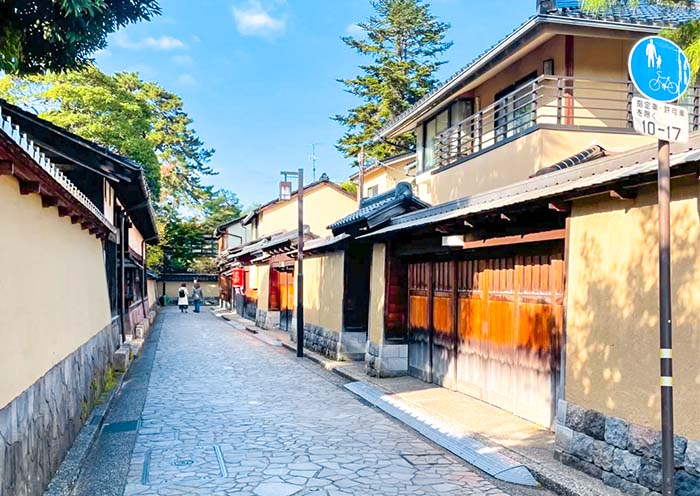
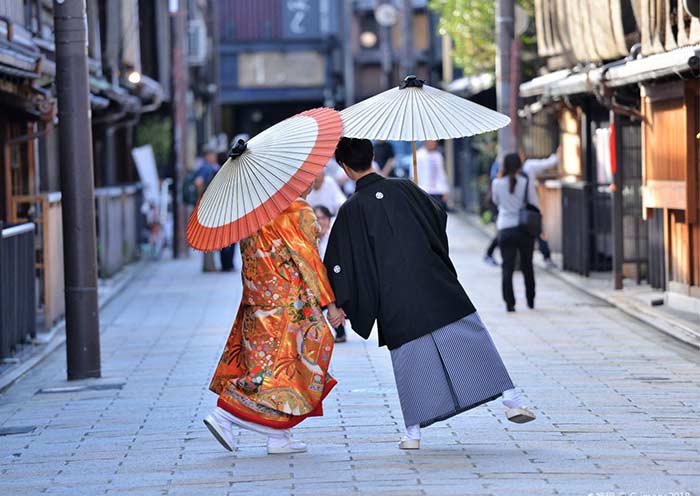
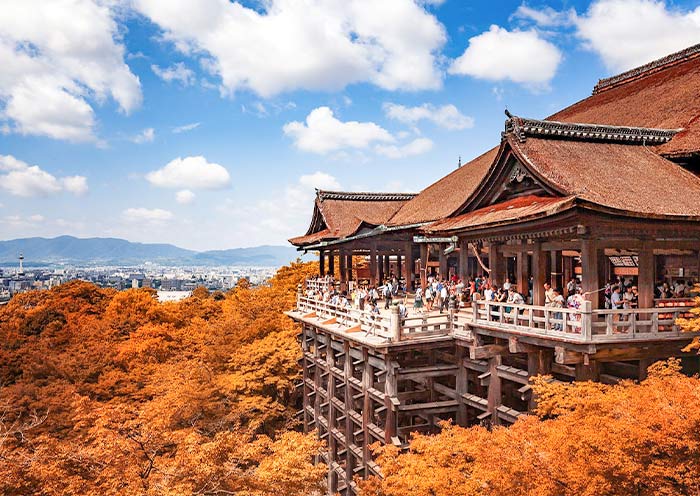
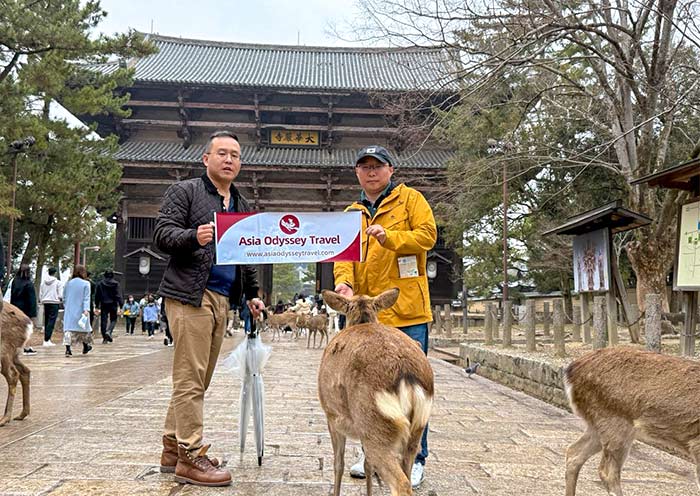
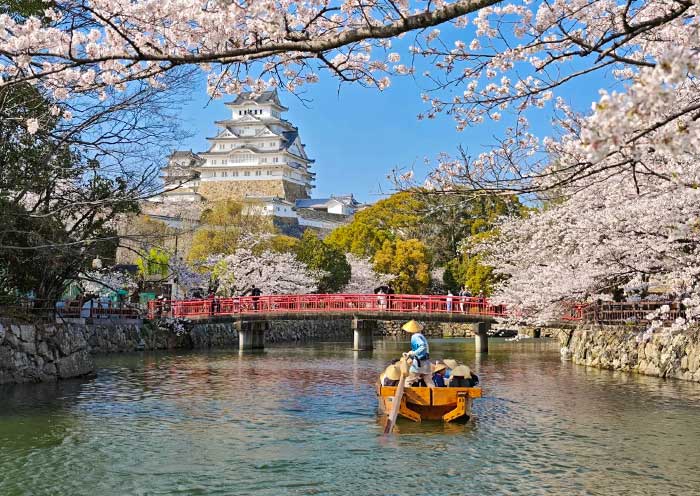

Itinerary at a Glance
Tokyo (3 Days)
Shinjuku Gyoen National Garden, Meiji Jingu Shrine, Senso-ji Temple, Tsukiji Fish Market, Hamarikyu Gardens, Imperial Palace Outer Garden
Mount Fuji (1 Day)
Arakurayama Sengen Park, Kubota Itchiku Art Museum, Tenjo-san Park Cable Car, or Lake Kawaguchi Cruise
Kanazawa (1 Day)
Kenroku-en Garden, Kanazawa Castle Park, Nagamachi Samurai District, Higashi Chaya District
Kyoto (2.5 Days)
Ryoan-ji Temple, Kinkakuji Temple, Gion, Yasaka Shrine, Ninenzaka & Sannenzaka, Kiyomizudera Temple, Fushimi Inari Taisha Shrine, Eizan Electric Railway, Kifune Shrine, Sanzenin Temple, Nishiki Market
Nara (0.5 Day)
Todaiji Temple, Nara Park
Himeji (1 Day)
Himeji Castle, Koko-en Garden
Osaka (1 Day)
Airport Transfer
Itinerary Day by Day
Konnichiwa(こんにちは)!Welcome to Tokyo, the capital city of Japan! Upon your arrival at the airport in Tokyo, your driver (not English-speaking) will meet you at the exit and then escort you to the hotel. You can have a good rest in your hotel and get ready to explore Tokyo with your guide the next day.
Tokyo is the capital of Japan and one of the world’s most exciting cities. It’s where ancient traditions meet modern life — think historic temples, neon-lit skyscrapers, sushi bars, and high-speed trains all in one place. Here, you can experience world-class dining, high-tech shopping, serene gardens, and a unique culture that blends centuries-old customs with cutting-edge trends.
Arrival Ideas:
Japan has two commonly used international airports. Narita International Airport, located 63.5 km from the center of Tokyo, is the primary international air hub for Tokyo, where flights from China to Tokyo usually land. Tokyo International Airport (Haneda Airport) is situated 17 km from the center of Tokyo and mainly serves domestic flights within Japan and some international flights, including flights to South Korea and other East Asian regions.
Cities that have Direct Flights to Tokyo include, but are not limited to: Beijing, Shanghai, Guangzhou, Shenzhen, Hangzhou, Xi'an, Chengdu, Chongqing, Hong Kong, Taipei, Kaohsiung, Seoul, Singapore, Bangkok, Kuala Lumpur, Jakarta, Bali, Manila, Ho Chi Minh City, Hanoi, and more. Please note that flight information is subject to changes based on time and market demand. Contact us to obtain the latest flight information and prices.
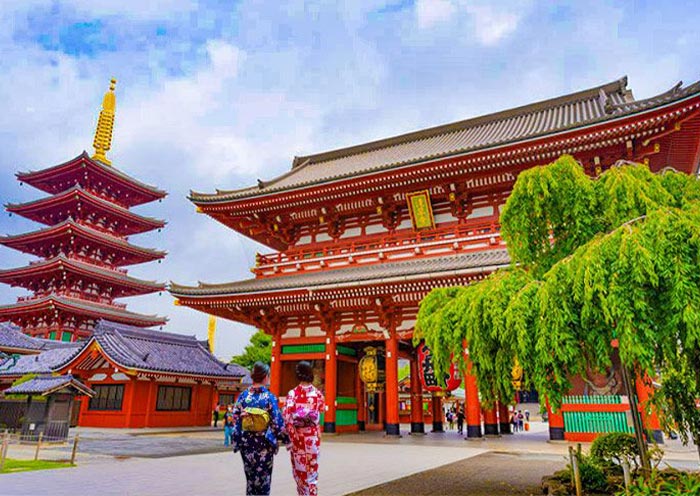
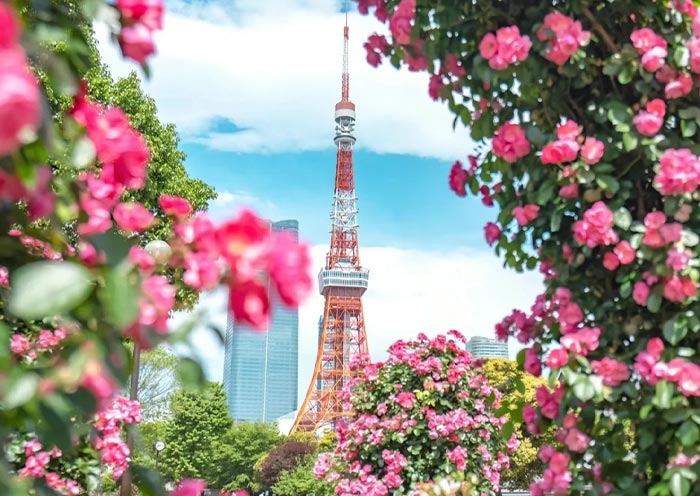
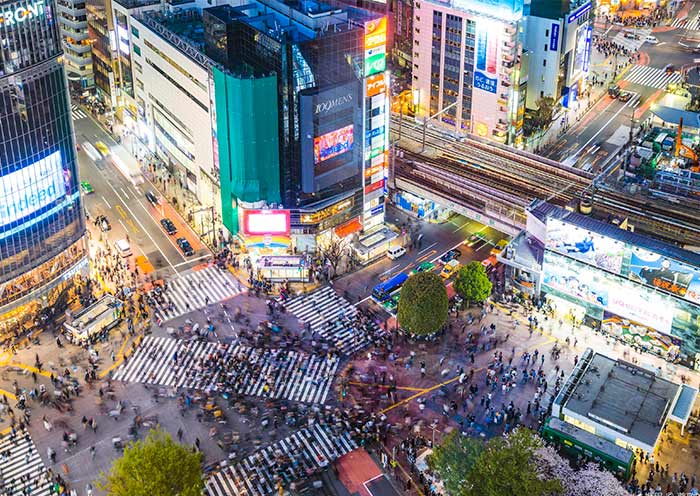
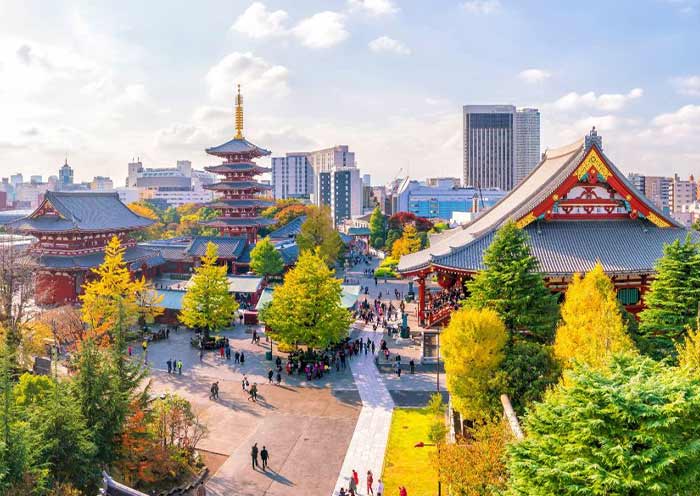
Start your day in Shinjuku Gyoen National Garden, a serene oasis in the heart of Tokyo. The oldest section is a traditional Japanese landscape garden with large ponds dotted with islands and arched bridges, framed by manicured shrubs, pavilions, and the elegant Kyu Goryotei (Taiwan Pavilion), built to celebrate the wedding of the Showa Emperor. You'll also see the formal French garden with its symmetrical flowerbeds and tree-lined avenues, and the English landscape garden where wide lawns are surrounded by flowering cherry trees.
Next, visit Meiji Jingu Shrine (Meiji Shrine), a Shinto Shrine dedicated to Emperor Meiji (1852-1912) and Empress Shoken (1849-1914), who played a crucial role in modernizing Japan while excelled in writing Waka (traditional Japanese poems of 31 syllables in the pattern 5-7-5-7-7). Meiji Shrine is a popular venue for traditional weddings, where you will have the opportunity to witness a Japanese Wedding Procession, experiencing the charm of Japanese traditional culture.
Founded in 1915 and finished in 1920, Meiji Shrine features a unique architectural style, with the main hall adopting traditional Japanese Shinto Shrine architecture infused with modern elements in its details. You will walk through Japan's Largest Wooden Torii Gate, standing in its natural wooden hue and weighing up to 13 tons. The Torii gate serves as the Symbol of Shinto Shrines, marking the transition from the worldly to the sacred. Walking through this gateway symbolizes stepping into the divine realm, evoking a profound sense of mystery and reverence.
As a peaceful oasis in the city, Meiji Jingu Shrine is the largest green space in the center of Tokyo. In the land-scarce city of Tokyo, the vast area occupied by the Meiji Shrine is truly astonishing! The sacred forest (170,000 trees) surrounding the main shrine buildings of Meiji Jingu is man-made, planted by 110,000 volunteers in honor of their beloved Emperor Meiji (established Shinto as the state religion) and Empress Shoken. The forest serves also to separate the sacred from the profane world.
Take a stroll along the paths and enjoy the fresh air and natural beauty. Then, you will notice the impressive Sake Barrel Wall along the South Approach, which features offerings from sake breweries and believers across Japan, including barrels of sake and Western liquor, reflecting Emperor Meiji's fondness for Western culture. At the main hall of Meiji Shrine, you can witness locals washing their hands and rinsing their mouths at Purification Font before worship as a sign of respect. You can offer a 5-yen coin (symbolizing a connection) like locals and pray for blessings. In the eyes of the Japanese, Meiji Shrine is considered to have such boundless capabilities, from naming ceremonies for newborns, to coming-of-age ceremonies, graduation ceremonies, seek marriage partners, pray for world peace, family well-being, safe travels, good health, warding off calamity, etc. In addition to immersing yourself in Japanese Shinto traditions and architecture, revel in the enchanting surroundings filled with lush trees, serene ponds, graceful bridges, and stone pathways that epitomize the essence of traditional Japanese garden art. You should visit here to enjoy the vibrant bloom of cherry blossoms in spring, the verdant beauty of summer, the fiery hues of autumn leaves, and the serene snowy landscapes of winter.
Tips for Visiting Meiji Jingu Shrine:
Wear modest clothing: Respect the sacred nature of the shrine by dressing appropriately.
Be mindful of noise levels: Maintain a quiet and respectful atmosphere.
Inner Garden (Optional; self-pay; once Imperial Property), and Meiji Jingu Museum (Optional; self-pay; items used by the imperial couple).
Then, head to Senso-ji Temple (Asakusa Kannon Temple), a must-visit for anyone traveling to Tokyo. Here, you can experience the heart of old Tokyo and its vibrant atmosphere. You can take photos that frame Senso-ji Temple and the Tokyo Skytree (Japan's Tallest Tower; 634 meters) together.
Senso-ji Temple was built in 628 AD and has a history of over 1300 years, making it one of Japan's oldest temples. It not only witnesses Japan's historical changes but also carries a rich Buddhist culture. The architectural style of Senso-ji Temple blends Japanese traditional culture and art, with rich colors and exquisite carvings. The main buildings include the main gate (Kaminarimon; a landmark of Tokyo), the bell tower, the five-story pagoda (a landmark of Tokyo), and the main hall, all reflecting ancient Japanese architectural style and religious beliefs.
Kaminarimon is the iconic structure of Senso-ji Temple, towering at 11.7 meters high and 21.7 meters wide, truly spectacular. Giant red lanterns hang in front of the gate, with the words "Kaminarimon" prominently displayed. Kaminarimon is not only a symbol of Senso-ji Temple but also one of Tokyo's most famous landmarks. You may have seen the work of Utagawa Hiroshige, one of the "Three Greats of Ukiyo-e," in his piece "One Hundred Famous Views of Edo: Asakusa Kaminarimon," depicting a snowy scene of the Kaminarimon gate, celebrated for its delicate portrayal and profound imagery, becoming a masterpiece of ukiyo-e art. The area is bustling and crowded with people coming to pray and seek blessings for health, peace, and happiness. Around Senso-ji Temple, you can taste various Japanese cuisines, purchase unique souvenirs, and participate in various celebratory activities.
Lastly, head to a foodie paradise! The Tsukiji Outer Market is a lively and bustling place where you can find all kinds of delicious food and fresh ingredients. While the famous fish auction has moved, the Outer Market is still an incredible place to eat and explore. The market is full of stalls selling everything from fresh seafood skewers and grilled tamagoyaki (a sweet, rolled omelet) to sweet rice cakes and savory snacks.
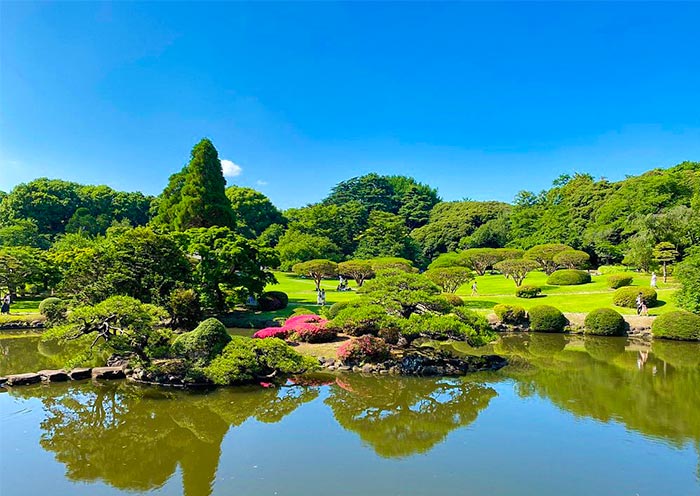

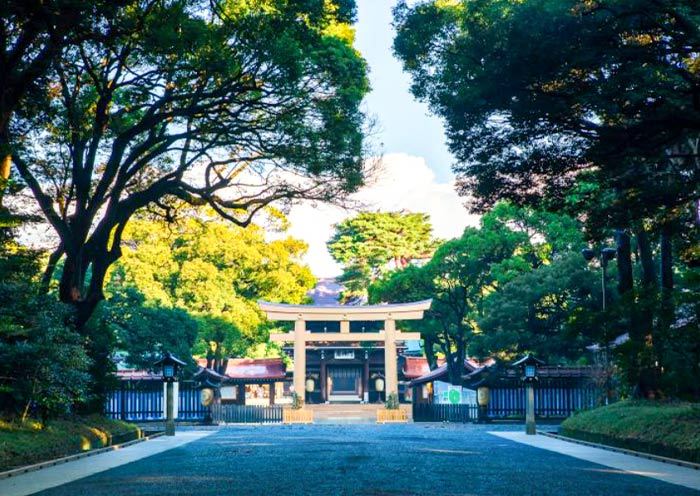

Today, it will be a full-day round trip to admire the breathtaking views of Mount Fuji from Arakurayama Sengen Park and Lake Kawaguchi.
Mount Fuji is the tallest mountain in Japan. It's a famous volcano with a perfectly symmetrical cone shape. Visiting Mount Fuji is essential for any traveler in Japan. As a UNESCO World Heritage Site, Mount Fuji (3,776m) stands as an iconic symbol of Japan, a cultural and spiritual landmark (recognized as a holy mountain in Shintoism), and a natural marvel. When picturing Mount Fuji, its distinctive perfect cone shape and snow-capped peak likely come to mind. Among the most renowned depictions is Katsushika Hokusai's 'Thirty-Six Views of Mount Fuji'. Hokusai, one of the "Three Greats of Ukiyo-e", is best known for his masterpiece "The Great Wave off Kanagawa," which can be seen on the 1,000 Japanese yen bill.
Begin your journey at the renowned Arakurayama Sengen Park, where you can admire the magnificent view of a five-story pagoda set against a backdrop of majestic mountains. Hike about 15-20 minutes up to Arakurayama Sengen Shrine, dedicated to the mountain god. The shrine is surrounded by beautiful gardens and offers a peaceful atmosphere. Enjoy the gorgeous scenery and capture iconic photos at the famous Red Fuji Observation Deck.
Then, head to Lake Kawaguchi, renowned for its clear waters that often reflect the majestic Mount Fuji on clear days. Upon arrival , you will visit Kubota Itchiku Art Museum. This unique architectural space houses a collection of beautiful rare kimonos, all designed and created by artist Ichiku Kubota. Ichiku Kubota (1917–2003) was a master textile artist renowned for his exquisitely crafted kimonos. He developed his own complex dyeing techniques, creating intricate patterns and colors inspired by nature, landscapes, and traditional Japanese culture. The tranquil museum setting also offers beautiful views of Mt. Fuji and the lake.
After exploring the museum, choose between two scenic experiences: a cable car ride at Tenjo-san Park or a peaceful cruise on Lake Kawaguchi.
Tenjo-san Park (Cable Car): Take a scenic cable car ride up to the park’s observation area. From the top, you’ll be treated to a stunning 360-degree view of Mt. Fuji, Lake Kawaguchi, and the surrounding countryside.
Alternatively, Lake Kawaguchi Cruise: If you prefer a more tranquil experience, you can opt for a lake cruise on Lake Kawaguchi. This leisurely boat ride offers beautiful views of Mt. Fuji from the water, allowing you to appreciate the landscape from a different perspective.
After that, head back to Tokyo overnight and have a good rest.
Notes:
- If the weather is clear, you can enjoy a good view of Mt. Fuji. However, if the weather is not favorable, Mt. Fuji may not be visible.
- The best time to view Mount Fuji is generally from Nov. to Feb. when skies are clearer and the peak is snow-capped. Nevertheless, it's important to keep in mind that weather can be unpredictable, and even during these months, there is no guarantee of a clear view.
- Early mornings often provide the best visibility before clouds obscure the view. Different locations around Mount Fuji offer varying perspectives, with some spots known for their clear views.
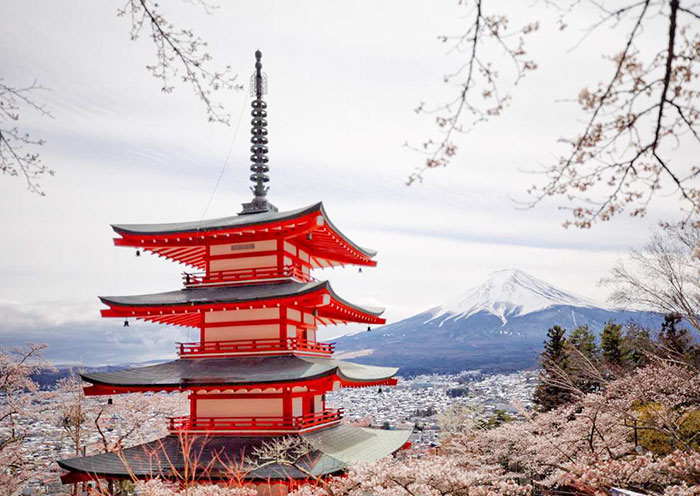
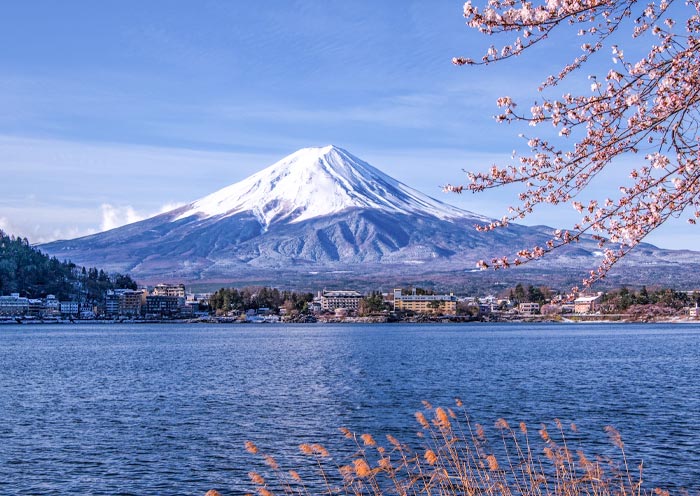
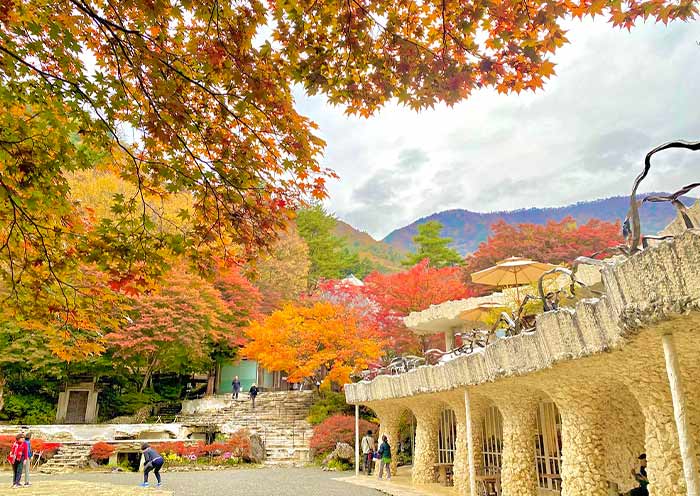
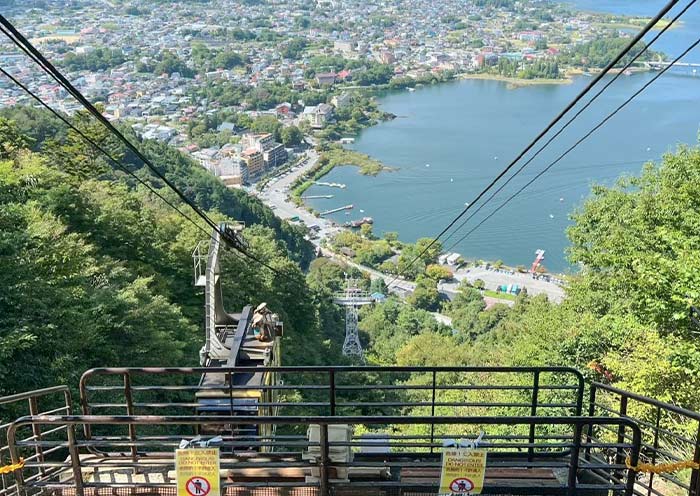
Begin the morning at Hama-rikyu Gardens, is the only Edo garden to incorporate seawater into the garden's pond. This elegant garden features its tidal pond, "Shioiri-no-ike,". It draws in seawater from Tokyo Bay, with its water level changing with the tides. There are three islands within the pond, with the largest one hosting a teahouse, Nakajima-no-ochaya, where visitors can enjoy matcha tea and Japanese sweets while admiring the serene pond views.
Next, we will visit the Imperial Palace Outer Garden (Kokyo Gaien). This beautiful, expansive park provides a magnificent view of the Emperor of Japan's official residence. While the palace itself is not open to the public, a stroll through the outer garden allows you to admire the impressive stone walls, picturesque moats, and the iconic Nijubashi Bridge (Double Bridge). It's a powerful symbol of the nation's history and a favorite spot for photos.
In the afternoon, we will head to Tokyo Station to board the Shinkansen (bullet train) to Kanazawa (about 3 hours). Upon arrival, transfer to your hotel in Kanazawa and enjoy the evening at leisure.
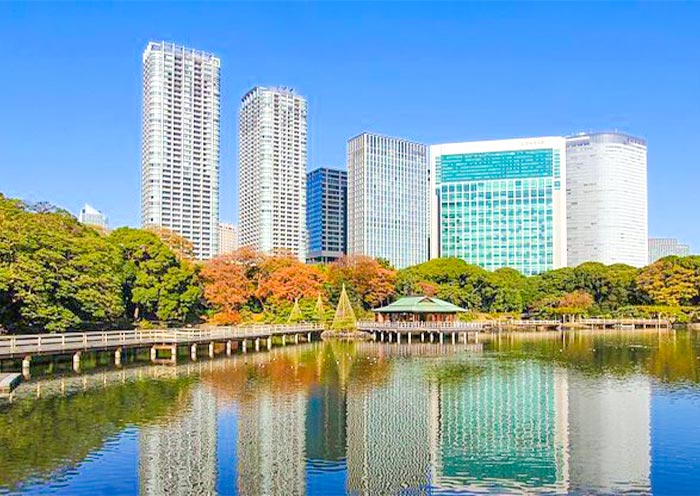
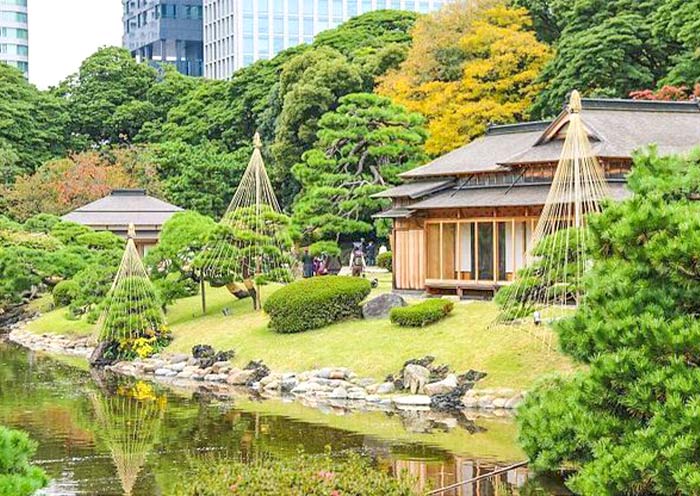
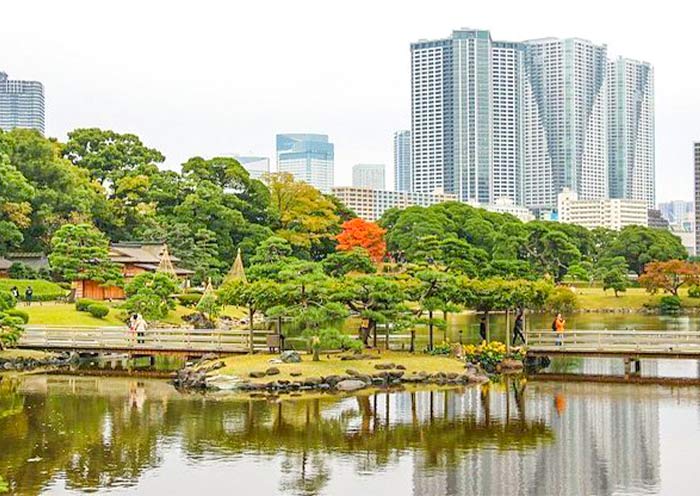
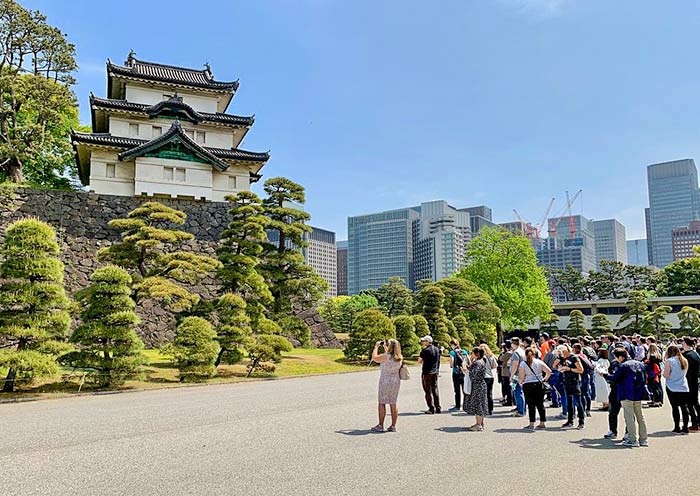
Take a whole day in Kanazawa for its traditional Japanese garden, castle, and samurai culture.
First, explore Kenroku-en Garden, a masterpiece strolling pond garden and one of Japan's top three. It shows off the best of Japanese garden art. This garden, built in the 1600s by the Maeda noble family and opened publicly in 1871, blends spaciousness, tranquility, artistry, ancient vibes, water features, and great views along its winding paths. Photographer would love every season, with spring's cherry blossoms and winter's yukitsuri (snow-draped trees) being their best model.
Inside through Mayumizaka Gate, the biggest highlight is Kasumigaike Pond, where you'll find famous Kotojitoro Lantern with one leg in water, one leg on bank. Nearby is unique Neagari-no-Matsu (Root-lifting Pine), with its roots impressively exposed. And, rest at Shigure-tei Tea House, a former noble resting spot, where you can enjoy matcha and sweets. Look back, stunning garden views pour in through its open doors.
Second, head to opposite Kanazawa Castle Park, Kanazawa's historical center. This expansive park encompasses famous Kanazawa Castle, once home to the Maeda family, powerful Edo-period feudal lords. The relics still echoes grandeur of rulers from centuries past.
You will explore key areas like the Hishi Yagura (a rhomboid-shaped watchtower showcasing castle's defense layout and wooden construction techniques), the Gojukken Nagaya (a 90-meter long armory and soldiers' barracks). This is your place to glimpse Edo-era castle and samurai.
Then, drive to Nagamachi Samurai District. It’s a precious relic of Japan's samurai culture, a core district where upper-ranking Edo-period samurai. Its narrow, rustic streets are lined with shoulder-high earthen walls and wooden buildings. The Nomura House exemplifies samurai life. Here, the house, pond, tree, stone lantern meet in perfect embrace. Sit, listen, or view from the second-floor tea room. An ideal spot to revitalize energy.
Next, explore Higashi Chaya District, Kanazawa's iconic old street often compared to Kyoto's Gion. Built in the 1800s, this area once hosted samurai enjoying tea and geisha performances, and over 20 original Edo-era buildings still line. You can experience Edo-period high society at Shima Teahouse with tea and sweets, and be sure to try gold leaf ice cream.
After the tour, take 2 hours train to Kyoto for hotel check-in.

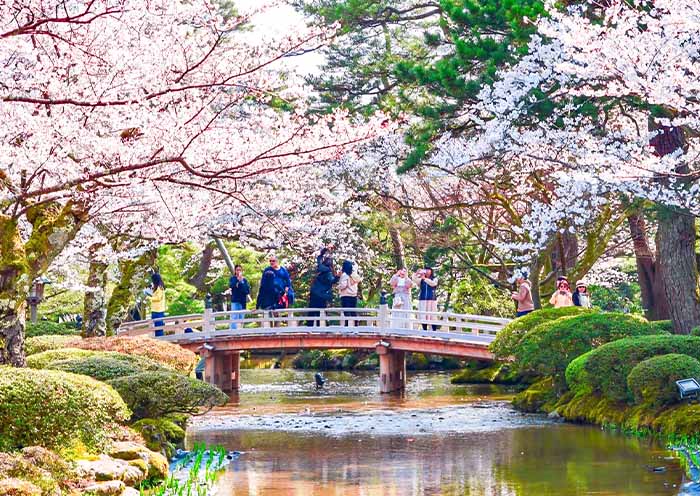
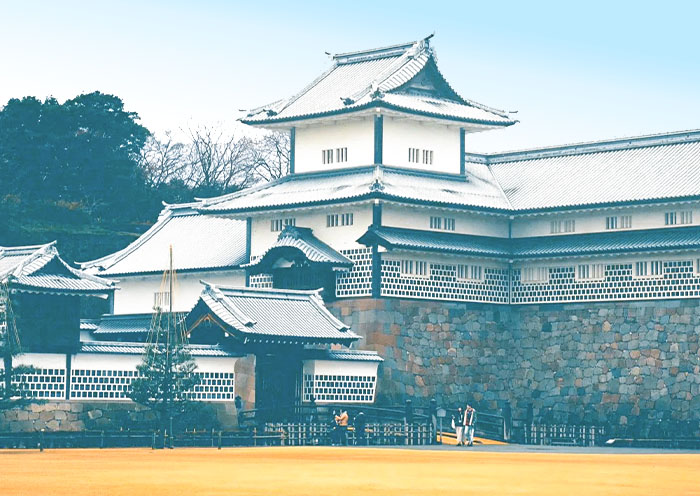

Begin at world-renowned Ryoan-ji Temple, home to Japan's most famous rock garden. The garden's "Karesansui" (dry landscape) is composed of 15 stones placed on a bed of white gravel, with a design that ensures at least one stone is always hidden from view no matter where you sit. This minimalist masterpiece is a profound space for quiet contemplation and reflection.
Next,visit Kinkakuji Temple (Golden Pavilion) - a UNESCO World Heritage site. This Zen Buddhist temple is famous for its stunning golden exterior. The temple's stunning visual appeal comes from its top two floors, which are completely covered in gold leaf. The reflection of the golden structure shimmering in the pond in front of it, making it perfect for photos and quiet reflection. It was originally built in 1397 as a retirement villa for Shogun Ashikaga Yoshimitsu. After Yoshimitsu's death, as per his will, the villa was converted into a Zen temple by his son.
After that, head to Gion, Kyoto's famous geisha district. Here, you might catch a glimpse of Geisha (Geiko) in their elaborate kimonos and traditional makeup. As you wander through the cobblestone streets of Gion, take a moment to appreciate the beautifully preserved machiya (wooden townhouses), ochaya (teahouses), and exclusive ryotei (traditional Japanese restaurants).
From Gion, a short walk will bring you to Yasaka Shrine, the guardian shrine of the Gion entertainment district, which dates back over 1350 years. Yasaka Shrine is particularly favored by those seeking beauty and wealth. Visiting this significant Shinto shrine in Kyoto, you may also find yourself gaining some good luck. The shrine is most famous for its Gion Matsuri in July, during which you can witness the procession where the deities of Yasaka are paraded through the city streets.
Then, walk up the well-preserved streets of Ninenzaka and Sannenzaka towards Kiyomizu-dera Temple. These charming, sloping streets are lined with traditional shops and quaint tea houses, offering a nostalgic glimpse into Kyoto's past. As you stroll through these areas, you can shop for unique crafts, sample local snacks, and perhaps stop at a café to relax and soak in the atmosphere of old Kyoto.
Your day culminates with a visit to Kiyomizudera Temple, another UNESCO World Heritage Site. Perched on the hillside of Eastern Kyoto, this temple is renowned for its wooden stage that juts out over the hill, providing stunning views of the city and the surrounding nature. The temple's main hall, constructed entirely without the use of nails, is an architectural marvel. Kiyomizu-dera is also celebrated for its sacred waters, which are believed to have wish-granting powers that draw countless visitors who come to drink from its stream. Don’t miss the Hondo (Main Hall), Jishu Shrine, the Otowa Waterfall, and the spiritual experience of the Tainai-Meguri room.
Tips: The scenery at Kiyomizudera Temple is distinctively beautiful in each season, offering a unique charm year-round. In spring, the mountains are adorned with charming cherry blossoms; in summer, they are lush with vibrant greenery; in autumn, they are decorated with brilliantly colored leaves; and in winter, they are filled with enchanting trees.
Stay overnight in Kyoto.
Optional Activities:
- Join a geisha tea ceremony in Kyoto. It offers a chance to see a performance by a geisha, experience the tea ceremony, and learn all about its artful rituals.
- Kyoto traditional kimono experience. Wear a traditional kimono and stroll through scenic districts like Gion or around Kiyomizu-Dera Temple. Enjoy photo opportunities and the feel of traditional Japan.
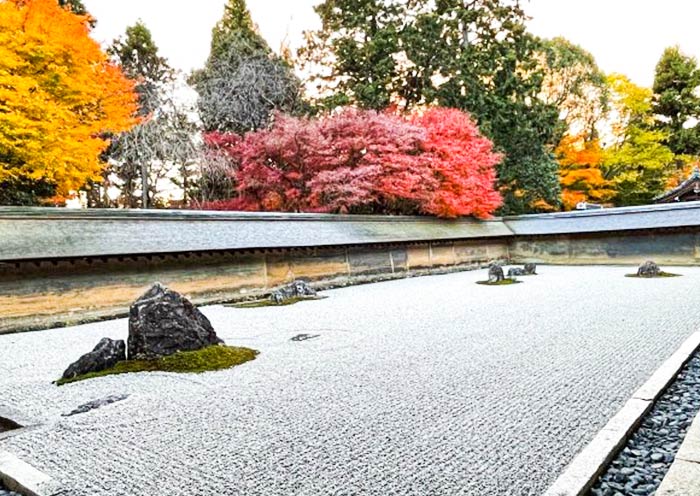
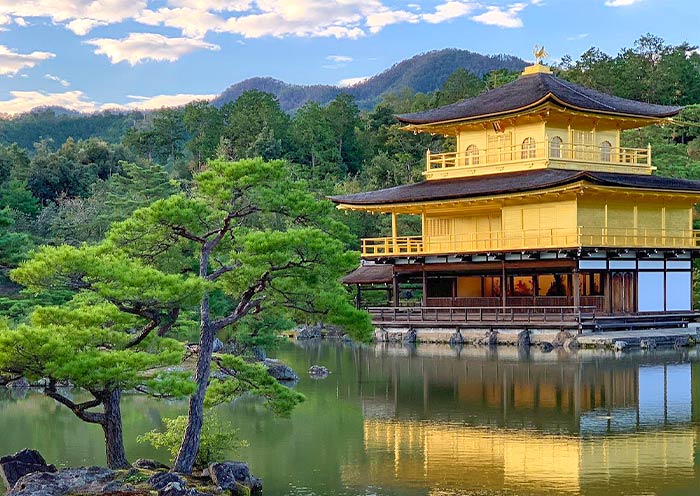
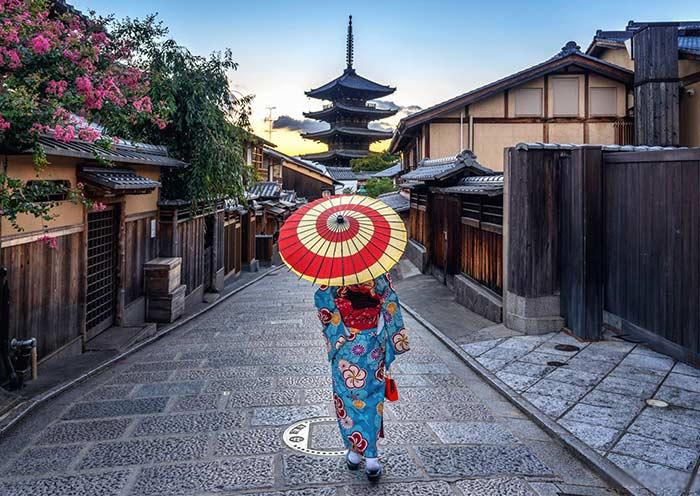
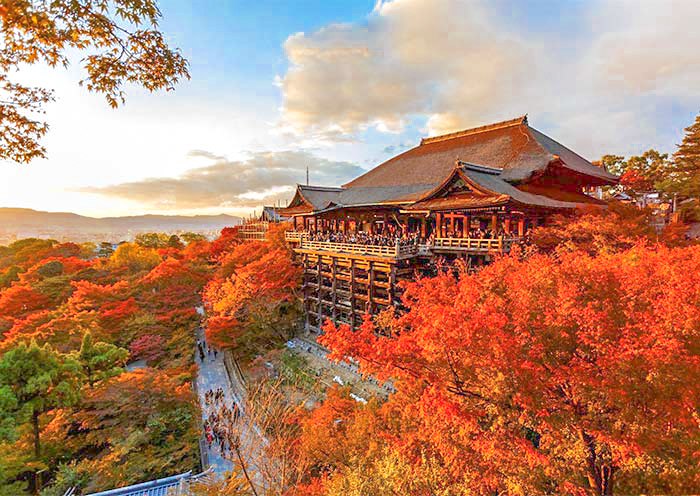
Today, head to the northern suburbs to experience the ancient charm and natural beauty of Kyoto. Take the scenic Eizan Electric Railway to Kifune Shrine, visit Sanzen-in Temple, and then return to the city center to explore Nishiki Market.
Begin your day by boarding the Eizan Electric Railway. Enjoy the scenic train travel, especially the stunning " Momiji Tunnel (Maple Tree Tunnel) " between Ichihara and Ninose Stations, a 250-meter-long track lined with more than 280 maple trees. In summer, it is full of lush green, and in autumn, it is a sea of fiery red.
Arrive at Kibuneguchi Station and follow the pathway leading up to Kifune Shrine. As you approach, you will be greeted by rows of red lanterns lining the stone stairs, creating one of the shrine's most famous and picturesque spots. Kifune Shrine is dedicated to the water deity who governs rainfall and water sources. Here, you can experience a unique form of divination called "mizu-ura" (water fortune-telling), where papers with prayers are placed in the shrine's stream, revealing your fortune as they soak.
Kifune Shrine is a complex of three shrines (Main Shrine, Yui no Yashiro, and Okunomiya) situated at different positions on the hillside. Although the shrine is not very large the path leading up to it is lush with dense forests, accompanied by the soothing sounds of the Kibune River, creating a uniquely mysterious and serene atmosphere. In summer, the thick trees provide a cool break from the heat, while autumn brings a spectacular display of fall colors with the changing maple leaves.
Optional Kawadoko Dining:
From June to September, Kibune's restaurants build covered platforms out over the river where visitors can enjoy a meal as the water flows beneath them. Known as kawadoko, dining on the platforms is a relaxing experience and an excellent way to escape the summer heat. Most restaurants serve kaiseki meals that range in price from 3,000 to 20,000 yen per person.
Then, drive to Sanzenin Temple, located in Ohara, Kyoto. It is one of the three temples of the Tiantai Sect. Sanzenin's vast temple has towering old trees, moss everywhere, and gurgling streams and it is renowned for its stunning gardens. The Shuheki-en Garden and Yusei-en Garden are the best places to enjoy the scenery of Sanqianyuan. These gardens are ornamental pond-style gardens, centered around ponds, are covered in dense moss, resembling lush green carpets, and serene greenery can be seen everywhere. Cherry blossoms in spring, hydrangeas in summer, maple leaves in autumn, and snowscapes in winter, whenever one comes to Sanzen-in they are surrounded by the tranquil beauty of the seasons.
Ojo Gokuraku-in Hall, centrally located in the moss garden, is a designated important cultural property. Inside is enshrined the culturally treasured statue of Amida Sanzon. In the depths of the garden, you will find there are a number of amusing stone statues that peek out from the moss. These mossy child Jizo statues were hand-carved by sculptor Takashi Sugimura. In Japanese culture, Jizo is considered a guardian of children and travelers. It's great fun to spot these charming little figures in their hiding places.
After, make your way back to the city center and dive into the vibrant and colorful Nishiki Market, known as "Kyoto's Kitchen." This vibrant market is the perfect place to sample a variety of local dishes, such as cute Japanese sweets, wasabi salt, fresh sashimi skewers, to tako tamago (small octopus head stuffed with a quail egg on a stick). Enjoy browsing through the stalls and trying different Kyoto delicacies.
Stay overnight in Kyoto.

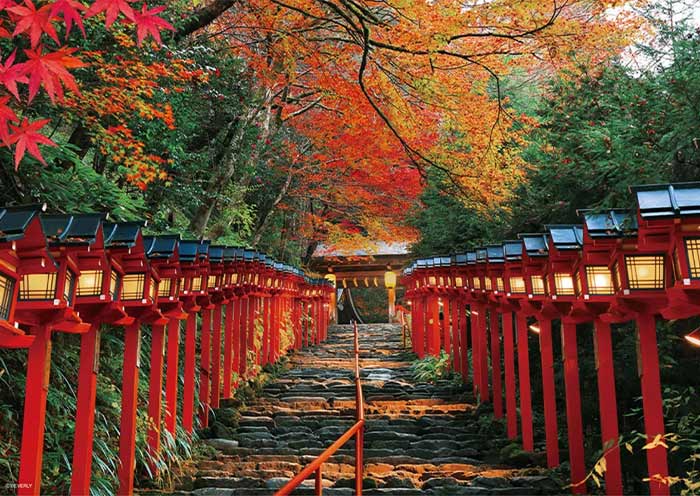
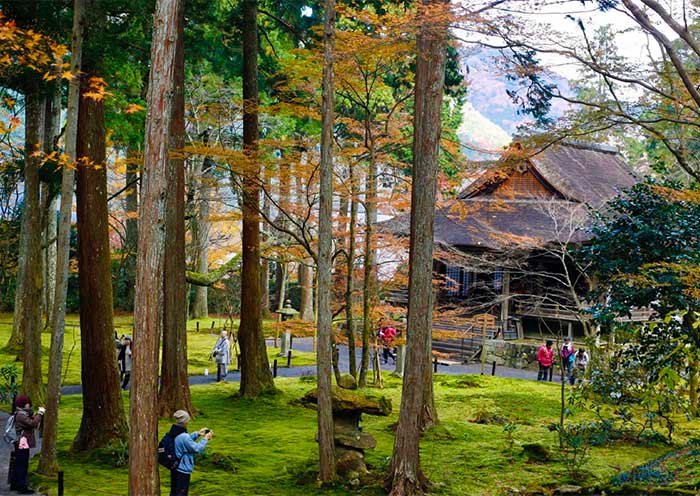
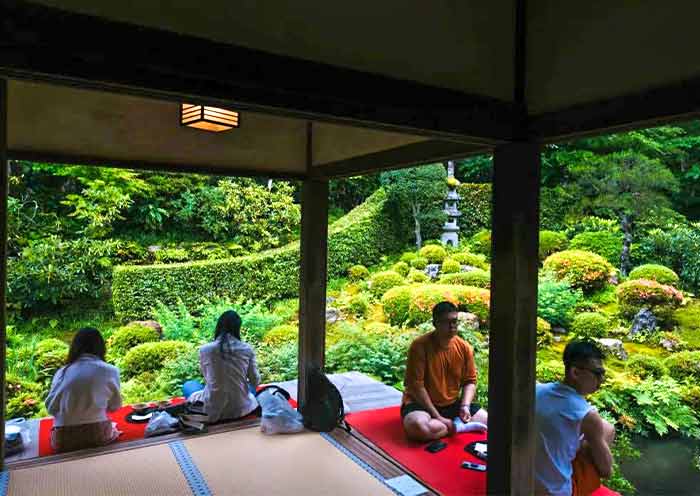
Start morning in Kyoto bright and early at one of its most iconic sites - the Fushimi Inari-taisha Shrine to beat the crowds.
Fushimi Inari Taisha Shrine is famous for its thousands of vermilion torii gates, known as Senbon Torii (“thousands of torii gates”). Layers upon layers of vermilion torii gates line the lush, wooded hillside, forming a seemingly endless corridor. The vibrant orange and black gates contrast beautifully with the surrounding greenery, creating a visually stunning and almost otherworldly path that is highly photogenic.
Fushimi Inari Taisha was founded in the early 8th century (711 AD) and is primarily dedicated to Inari, the Shinto god of rice, fertility, sake, agriculture, and industry. As you explore the shrine, you will encounter hundreds of fox statues. Said to be the messengers of the god Inari, who is associated with cereal grains, these fox statues often symbolize the deity. Many of these fox statues are depicted holding a key in their mouths, which is said to open the granary.
Tips: Hiking to the summit of the mountain and back will take two to three hours, but many people go only as far as the Yotsutsuji intersection because there are fewer torii gates beyond this point. It will take 30 to 40 minutes to reach Yotsutsuji.
Depart from Kyoto and head to Nara, an approximately 1.5-hour car ride. Nara holds a special place in Japanese history as the country's first permanent capital, predating Kyoto. Nara boasts eight World Cultural Heritage sites, making it Japan's second most culturally rich city after Kyoto.
Visit Todaiji Temple, one of Japan's most historically significant temples and a UNESCO World Heritage site. It is known for housing the world’s largest bronze statue of the Buddha Vairocana, which stands just over 16m high and consists of 437 tonnes of bronze and 130kg of gold. It represents Vairocana Buddha and is flanked by two Bodhisattvas. Todaiji's main hall, Daibutsu-den (Big Buddha Hall), is one of the world’s largest all-wood buildings, despite the fact that the present reconstruction of 1692 is only two-thirds of the original temple hall's size.
Walk to Nara Park, adjacent to Kasuga Taisha. This park is famous for its hundreds of freely roaming deer, considered messengers of the gods in Shinto tradition. Purchase some shika senbei (deer crackers) to feed the deer as you stroll through the park.
After the tour, drive to Osaka (typically takes around 45 minutes to an hour) and stay overnight.
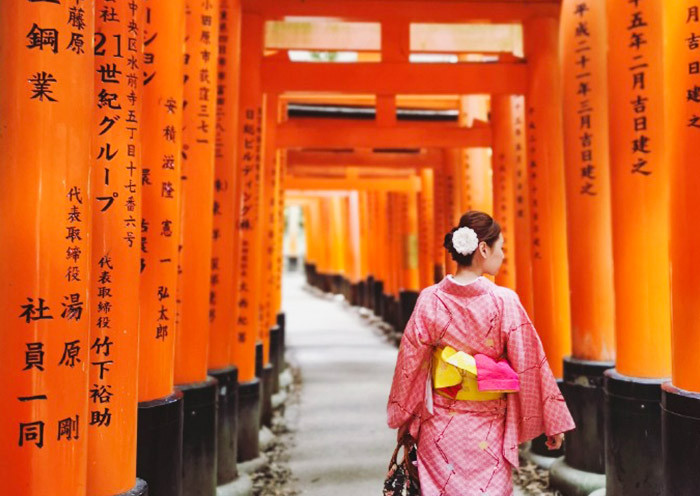
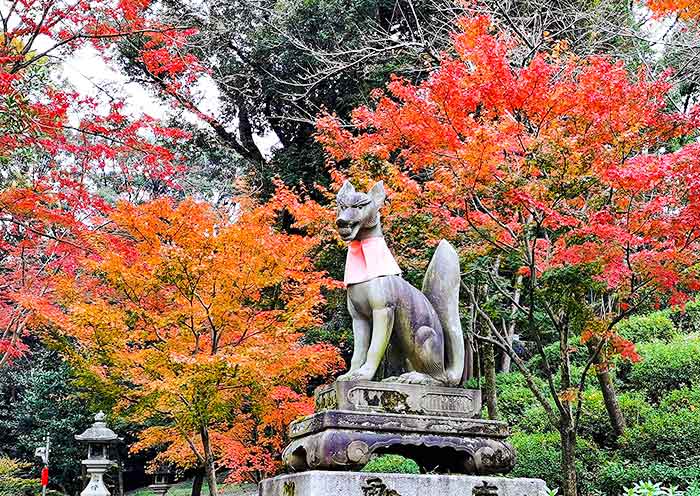
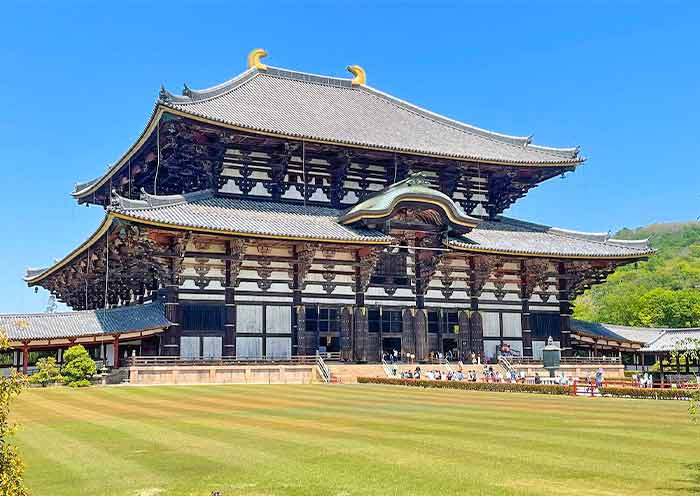
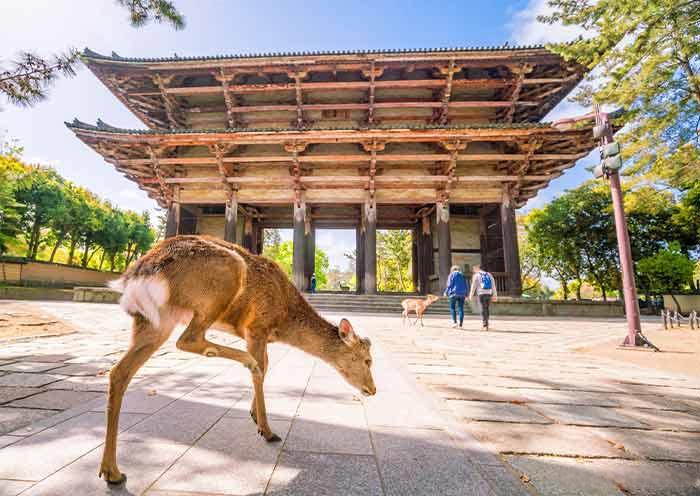
After breakfast, head to Himeji (about 1.5-2 hours), a charming city nestled in Hyōgo Prefecture. It is renowned for its stunning Himeji Castle, a UNESCO World Heritage Site.
Upon arriving in Himeji, you'll be greeted by the majestic Himeji Castle, often affectionately referred to as the "White Heron Castle" due to its graceful white walls and roofs that resemble a white heron taking flight. This iconic structure was built in the 14th century and has served as a symbol of the region for centuries. Throughout its history, it has played a pivotal role in Japanese history, serving as a stronghold for various feudal lords. As you explore Himeji Castle, you'll be captivated by its intricate details and architectural marvels. Climb to the summit of the main tower for breathtaking panoramic views of the city and the surrounding landscape. Immerse yourself in the rich history of the castle, learning about the significant events and figures that have shaped its legacy.
Next, step into the serene Koko-en Garden, located beside the castle. This beautifully designed complex consists of nine separate walled gardens, each showcasing a different traditional style, from pond gardens with koi fish to tea gardens and bamboo groves. Seasonal flowers and carefully tended landscapes make it a perfect complement to the castle visit.
After the tour, drive back to Osaka for accommodation.
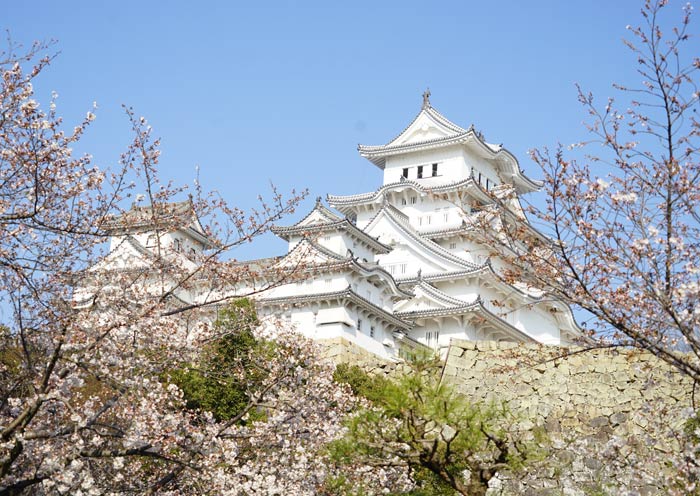
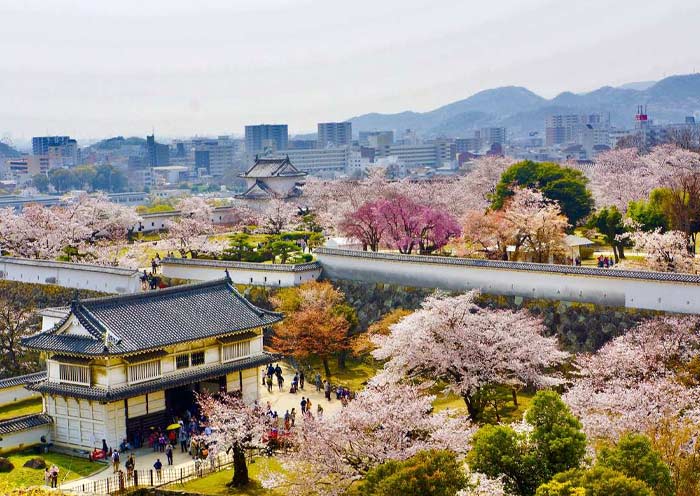
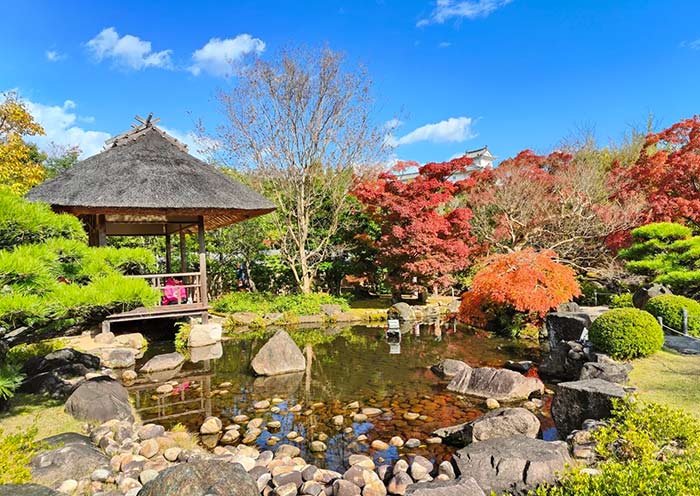

It is time to end your unforgettable 10-Day Japan Garden Tour. Your driver will pick you up from your hotel and transfer you to the airport for your departure flight.
Trip Extension: If you'd like to extend your trip in Japan, consider exploring other notable regions like Hakone, Nikko, Takayama, Shirakawago, Hokkaido and Okinawa, etc. Feel free to contact us to customize your extended itinerary.
Thank you for choosing Asia Odyssey Travel for your tour of Asia. We are dedicated to enhancing your travel experiences and look forward to welcoming you on your next adventure in Asia. Have a safe journey home!
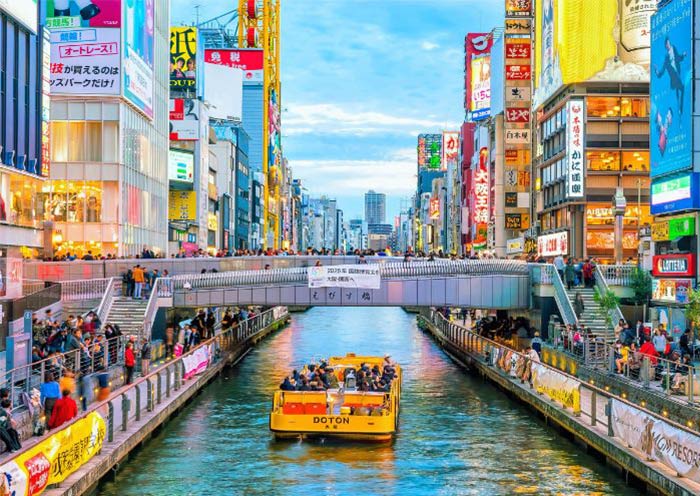
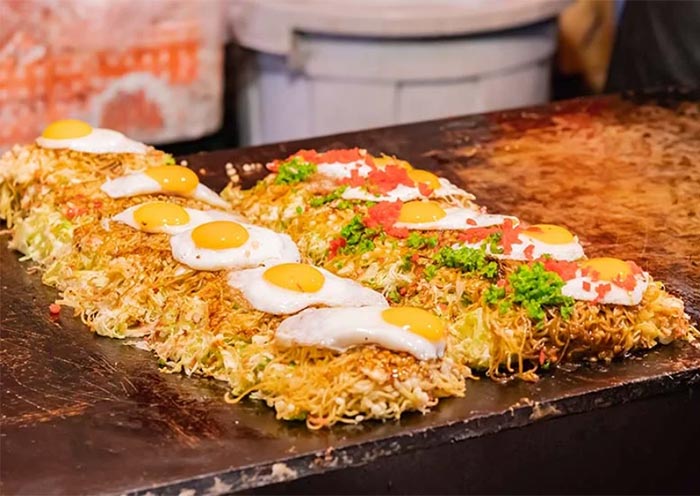
What’s Included & What’s Excluded
What's Included:
What's Excluded:
Important Travel Tips for Visiting Japan
Get the right visa. Depending on your nationality and the length of your stay, you may need to apply for a visa in advance. You can do this online or at a Japanese embassy or consulate. Many countries are part of Japan’s visa exemption program, allowing their citizens to enter Japan for short stays without a visa for tourism. Always check if your country is on this list before applying for a visa. If you have any questions, feel free to contact our travel experts for more information.
The best time to visit Japan depends on your interests:
Spring (March to May): Ideal
for witnessing the cherry blossoms and enjoying mild weather. Major cities like Tokyo, Kyoto, and Hiroshima
are particularly beautiful as cherry trees bloom spectacularly.
Summer (June to
August): Perfect for experiencing vibrant festivals such as Gion Matsuri in Kyoto,
Tanabata Matsuri across the country, and enjoying the natural beauty of Hokkaido, which is less humid than
the rest of Japan. Note that early summer (June) is the rainy season.
Autumn (September to
November): Offers stunning fall foliage, making it a great time for hiking and temple
visits. The weather is cool and pleasant, ideal for outdoor activities.
Winter (December to
February): The best time for winter sports, especially in regions like Hokkaido and the
Japanese Alps. Onsens (hot springs) are also a popular attraction during the cold months.
Bring Cash. Despite advances in digital payment, many smaller vendors, temples, and rural
areas operate predominantly with cash. It’s wise to keep some yen on hand at all
times.
Universal Travel Adapter. Japan uses 100V with two straight thin
pins.
Passport: Ensure it’s valid for at least six months beyond your date
of travel.
Visa (if required): Make sure you have the right visa for your
travel.
Travel Insurance Information: Always good to have on hand.
Bow when greeting: A slight bow is a common way to say hello, thank you, or
sorry.
Be mindful of your noise level: Japanese culture values quietness,
especially in public transportation and residential areas.
Follow the rules: Whether
it's waiting in line or adhering to signage, following local rules and etiquette is highly
valued.
Etiquette in temples and shrines: Wear modest clothing and follow specific
customs such as washing hands and mouth before entering a shrine or temple. Photography might be restricted
in sacred areas.
Looking for more travel guides for first-time visitors to Japan? Want to gather additional information to plan your trip? Our team of professional travel experts has written over 40 articles about Vietnam. Please check out ourJapan Travel Guide for inspiration and detailed insights.
Hotel Conditions for Your Japan Tour
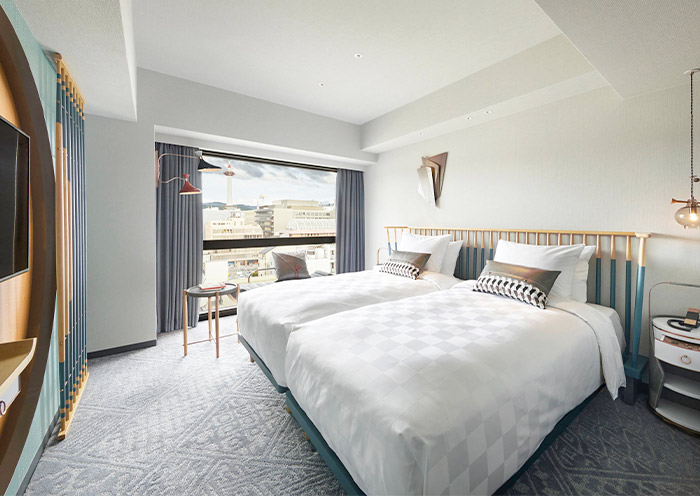

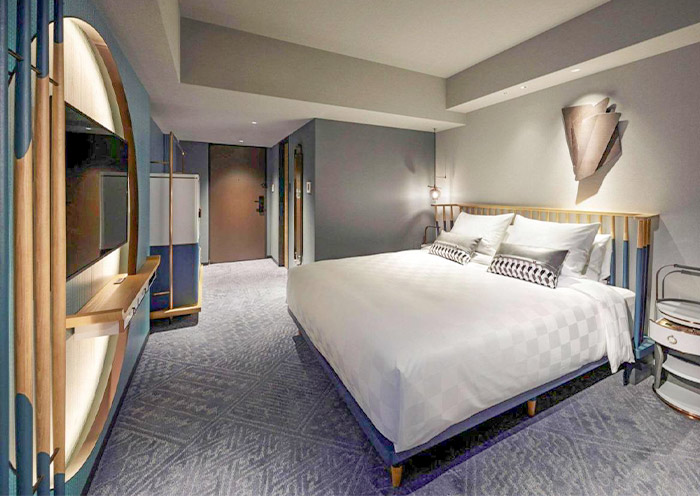
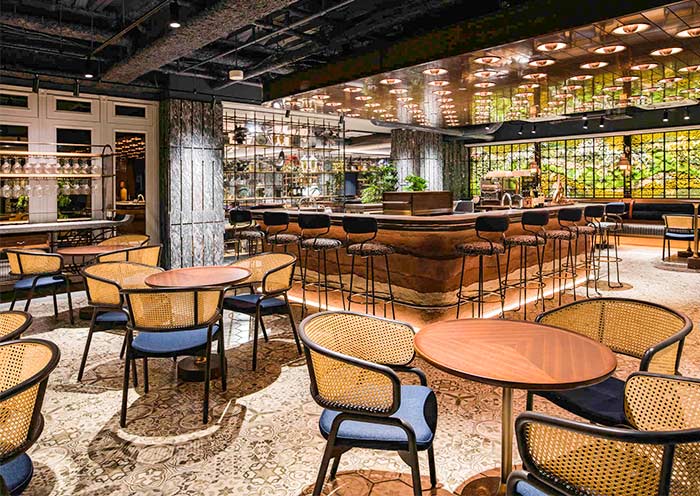
We offer a range of accommodation options to suit various preferences and budgets: luxurious 5-star hotels, comfortable 4-star hotels, and economical 3-star hotels. Our selected hotels are conveniently located close to the city center or popular tourist spots.
For those seeking a more distinctive lodging experience, we also offer Traditional Ryokans, Machiya, Onsen (hot springs) Hotels, etc. If you have specific needs or preferences, please consult with your travel advisor.
Tips: Be aware that hotel room sizes in Japan may be smaller compared to those in other developed countries due to the scarcity of land. If your budget allows, it is recommended to opt for a higher category of hotel, which will generally offer more comfort.
Photo Gallery for This Itinerary
Latest Japan Tours Reviews from Our Customers

Jess
Malaysia
Destination(s): Beijing, Xian, Shanghai, Zhangjiajie
Date of Experience: Sep 04, 2025
Tour Customized by: Yee
You May be Interested in This Tour: 26 Days In-Depth Vietnam China Japan Tour: Ultimate Asia Contrast

Claudia Konrado
Brazil
That’s when a friend recommended Asia Odyssey Travel (AOT), and it was the best decision we made! Not only did they completely customize our entire trip, but they did so at a perfectly reasonable cost. Our travel agent, Abby, was absolutely incredible. She worked tirelessly with us to build out an itinerary, patiently answering all our questions, offering guidance, making changes, and adding new ideas with such care and professionalism. From Disney and Universal for the teens to visits to TeamLab Planets, museums and temples and shopping excursions, ending with a relaxing beach time in Okinawa, Abby worked with us and ensured there was something wonderful for everyone. Even during the trip, she was always available to help and provide support. I truly can’t express how much Abby made a difference in our experience. The entire team at AOT, from the guides to the drivers, was consistently helpful and attentive, ensuring every moment of our journey was smooth and enjoyable. We are so grateful for the wonderful memories created, all thanks to the dedication and expertise of AOT team. We highly recommend them for an exceptional travel experience.
Date of Experience: Jul 01, 2025
Tour Customized by: Abby
You May be Interested in This Tour: Customized Tour

Cheers
Britain
I’m so glad we chose to do this tour! We were looking for a way to escape the summer heat, and Hokkaido was a dream come true. The air was so fresh and the scenery was just incredible—I swear my photos don’t even do it justice.
The highlight for me was definitely the lavender fields in Furano. They were even more beautiful in person than in all the pictures you see online. Our private guide knew the best spots to get a great view without fighting the crowds. Plus, we got to see all the other rainbow flower fields in Biei which were just as amazing.
The trip was super relaxing because we didn't have to worry about a thing. Our driver was so professional, and it was a huge relief to have a private car just for our family. It made getting between all the different towns so easy. We loved exploring the charming canal in Otaru and getting to eat all the fresh seafood in Sapporo. The food in Hokkaido is seriously on another level!
Date of Experience: Jun 10, 2025
Tour Customized by: Cheers
You May be Interested in This Tour: 8 Days Hokkaido Summer Tour: Colorful Family Vacation on Hokkaido Island
Price: From USD request pp
(Based on a private tour for 6 persons staying in 4-star hotels. Prices may vary depending on the itinerary, travel dates, and group size. )
(Book at least 6 months in advance)
